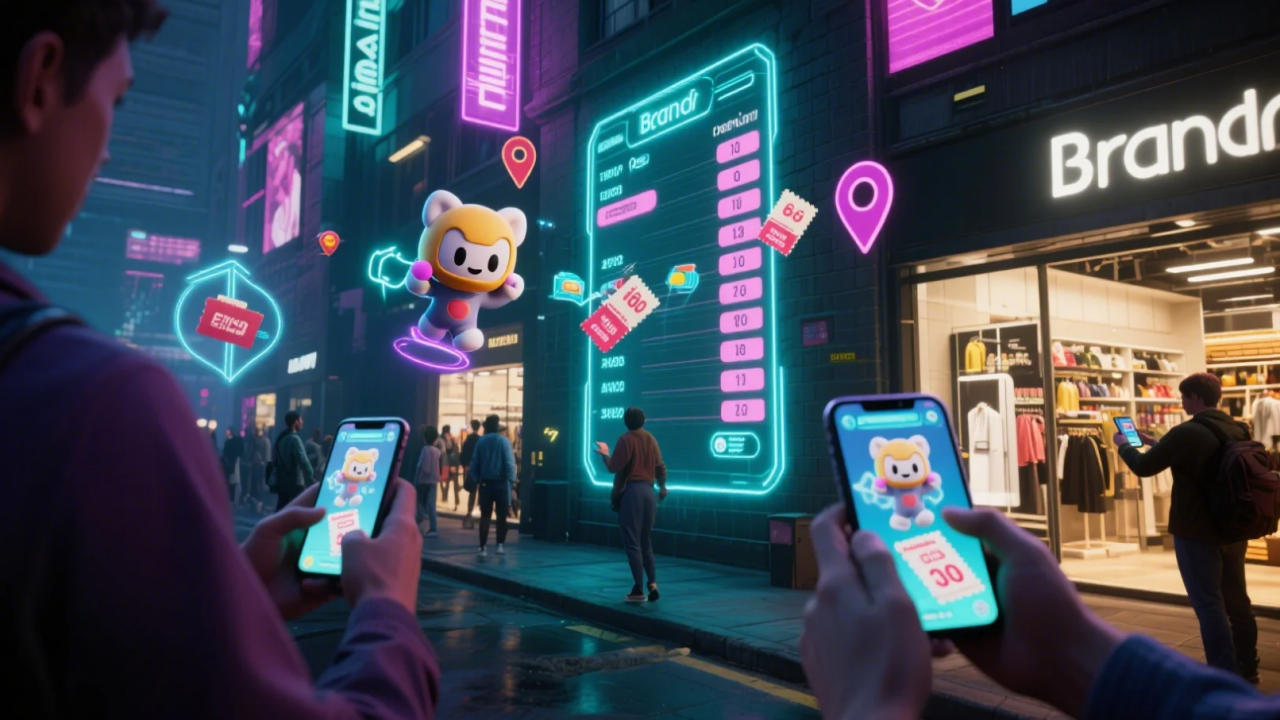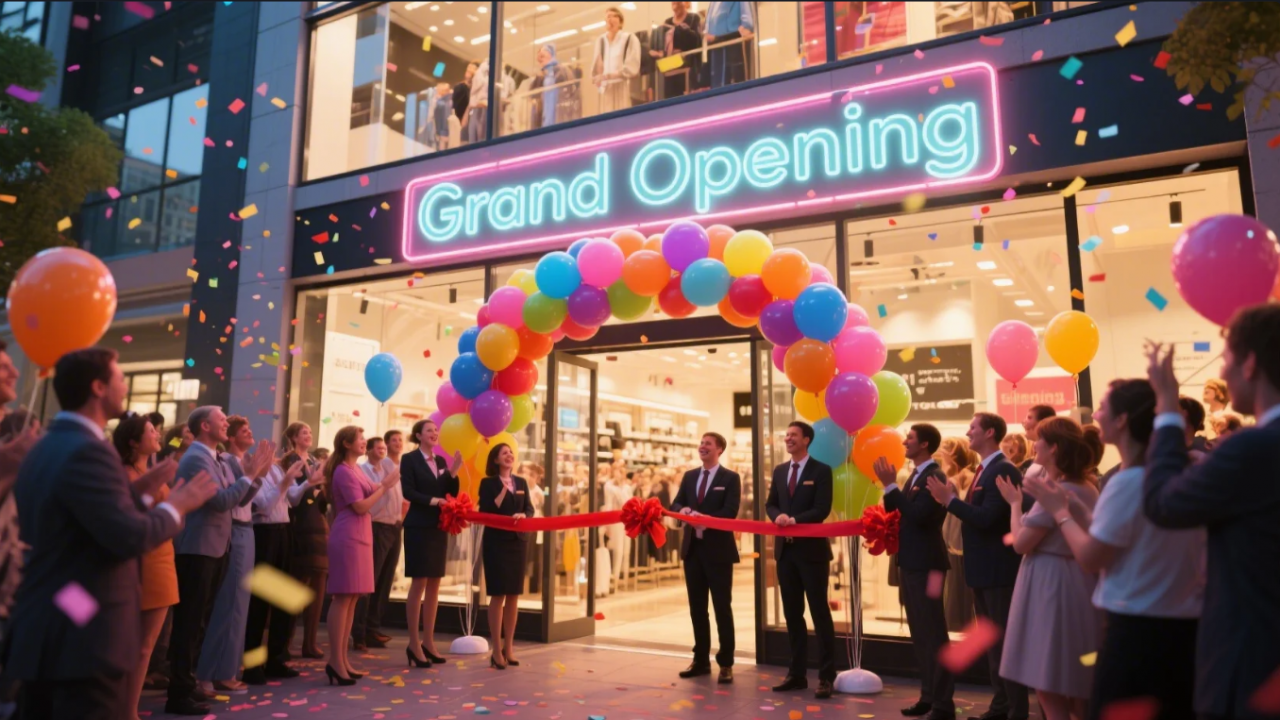What are AR pop-up stores?
As online shopping gained preeminent attention, brands sought to answer the call for authenticity by introducing a new, innovative concept: AR pop-up stores. These stores, existing in brick-and-mortar and digital environments, bring the magic of smartphone lenses and AR glasses to the retail experience, creating a new frontier in shopping.
AR technology transforms these stores into immersive 3D environments or holographic displays in real-world settings. This innovation allows users to try on designer outfits virtually, interact with products in their living rooms, or explore dazzling brand showcases in urban squares, all without the constraints of traditional retail spaces. Thus, it ensures a convenient and practical shopping experience.
AR pop-up stores are more than just a retail concept; they are the buzzwords that foster a deeper emotional connection. These stores engage customers personally through an irresistible fusion of innovation, creativity, and convenience, making every visit a memorable experience. The introduction of AR mirrors in big fashion and furniture stores from Manhattan to London is a testament to the emotional engagement these stores create.
How do AR pop-up stores increase omnichannel sales?
We often forget that customer priority is not just shopping, whatever comes; it’s about making an informed decision based on analytical integration. Omnichannel sales are seamless integrations of AI with AR to help customers understand the complexities of brand values.
Alongside this, the promising feature omnichannel offers bridges the gap between the digital and physical divide. The product details showcased on the screen but at the store make the journey worth it. Also, the transition from shopping in-store shelves to digital elements overlaying the products enhances customer engagement.

Source: gondola
Some stores also offer a gamified experience to provoke attention and drive foot traffic to their physical stores. This activation helps customers receive incentives such as discounts, redeemable points, and more.
AR pop-up stores make brands accessible in new locations, including areas without physical stores. This broadens reach and encourages customers to engage with the brand through online shopping or mobile apps.
AR pop-ups enable immediate purchases through integrated digital payment systems. Customers can buy on the spot, whether online or in-store, simplifying the buying process and strengthening channel interconnectivity.
Applications and Use cases of AR Pop-up stores
Gamification
A gamified experience keeps the clients attentive and gives them a fun experience. This entity was brought to attention when Biotherm decided to set up pop-up stores with AR experience in gamification. The blend of technology with beauty provides innovative advancements in marketing. Through virtual interaction with products, the incorporation of augmentation offers an engaging and immersive shopping journey.
Simply scan the user on the Cera Repair Pop-up AR game from your phone’s camera. All the digital elements will pop up. Now, you can preview any product and its ingredients.
Interactive screen
The PRADA Fragrances AR pop-up at China Duty-Free (CDF) in Hainan has redefined the shopping experience to foreshow a blend of luxury, innovation, and technology. This remarkable approach and experiential installation focuses on customers’ multi-sensory journey. The pop-up is designed to embody PRADA’s signature elegance, incorporating modern aesthetics with avant-garde elements.
Since PRADA focuses on the premium outlook of the brand, this pop-up store lets the customers decide on whichever background products they want. Alongside that, eco-conscious messaging is also brought to the table to keep the users engaged.
Storytelling:
The collaboration between BOSS and Le Petit Prince brings together the timeless charm of Antoine de Saint-Exupéry’s classic tale and the modern appeal of the BOSS brand. By incorporating Augmented Reality (AR) into this partnership, the experience transcends traditional fashion and storytelling.
The colorful elements popping up made it an unforgettable experience for the users. Since a fairy-tale theme backed the collection, the cutesy princes and lovely bouquets of roses showed the essence of love. Besides that, the obvious pop-ups further claimed the smell of BOSS fragrances would be flowery and dewy for men and women.
Magic Mirror
When discussing luxury and augmentation, brands are eager to put forward a premium outlook of their campaigns. The ideal situation is to keep the users engaged, and that’s when the Viktor&Rolf Flowerbomb campaign stepped in. In Hainain, the AR pop-up stores were filled with flowers to promote the iconic appeal. This globally renowned fragrance also allowed AR try-on features like scanning a QR code to visualize the fragrance’s story. Besides that, the ingredient highlights ensured users could openly and easily get an understanding of what each spritz of the fragrance contained.
Retail and Brand Activations: Immersive product showcases and limited-time events.
Augmentation installed in areas where customers are most likely to step in increases a brand’s visibility. Three-dimensional elements leaping off the shelves create vibrant and interactive displays. AR pop-up stores are the brand’s way of activating real-time customization in a new dimension.
For example, a leading fashion and beauty brand, YSL beauty, initiated a pop-up experience for all its Gen-Z clients. By leveraging VR technology, users could be transported into a 360-degree preview of the beauty zone. Besides that, an immersive experience forged 3 pillar products to connect to the brand through its hero products.
Some even offer limited-time events to create a sense of urgency, add games for rewards, and offer more chances for memorable adventures for the customer. Many luxury brands, tech companies, and fashion labels use AR pop-ups to captivate audiences and foster emotional connections.
Benefits of AR Pop-up stores
Captures attention and drives foot traffic.
Pop-up stores are a fun way to shop unlimitedly. After the pandemic, many customers moved towards online shopping, and brands maintained their credibility through unique technological approaches. One such approach was augmentation.
The virtual try-ons provided an immersive experience, and customers couldn’t wait for the stores to open to try the in-person experience. To keep up with expectations, brands revolutionized AR pop-up stores as hybrids and drove foot traffic, which was exciting.
Creates memorable and shareable experiences.
The exclusivity and tailored experience make it unforgettable for the customer, leaving a lasting impression. Personalized interaction encourages customers to express their interest, amplifying brand visibility. Some brands are also increasing customer loyalty through the interactive and visually stunning elements of AR, encouraging customers to share their experiences on social media.
Enhances brand storytelling and customer engagement.
AR technology brings a brand’s story to life, making it engaging and interactive. Brands can use AR to craft narratives around their products or heritage, immersing customers in the brand’s journey. Features like virtual try-ons, product customization, or gamified experiences keep customers engaged longer and encourage exploration of the brand’s ecosystem.
Trends in AR Pop-Ups
Integration with AI for personalized experiences.
Many customers need personalized recommendations to meet their needs. Since AI and AR integrate the same input, tailored choices and performances are inevitable. From customized try-ons to explicit previews of the furniture in their own houses while measuring the area around the room, this technological approach is becoming remarkable.
Use of AR wearables for seamless interaction.
The integration of augmentation at pop-up stores to offer a seamless shopping experience gives a unified journey from the comfort of home. Like that, AR glasses are becoming immersive by making it easy and hands-free. From making informed purchase decisions to completing transactions, the stepping stone for pop-up augmentation is AR glasses that offer cost-efficiency and sustainability.
Expansion into hybrid physical-digital pop-up stores.
Some pop-up stores combine brick-and-mortar with digital elements for an extra effect on the physical setup. This entity will be the futuristic view of each product popping up on the smartphone screen and showcasing its details. Besides that, some will offer customization options, immersive storytelling, and facial expression detection for omnichannel sales.
Conclusion
Since online shopping has surged, all brands are protesting to get the best out of augmentation. Pop-up stores are becoming the preview of what the store can look like without spending a dime to create a permanent one. This entity gives insights into which location is expandable without involving risks. Kivisense is the first in China and one of a few worldwide to be selected for its remarkable AR approach. Everything, from fashion try-ons to accessories, is available at the touch of a screen.






